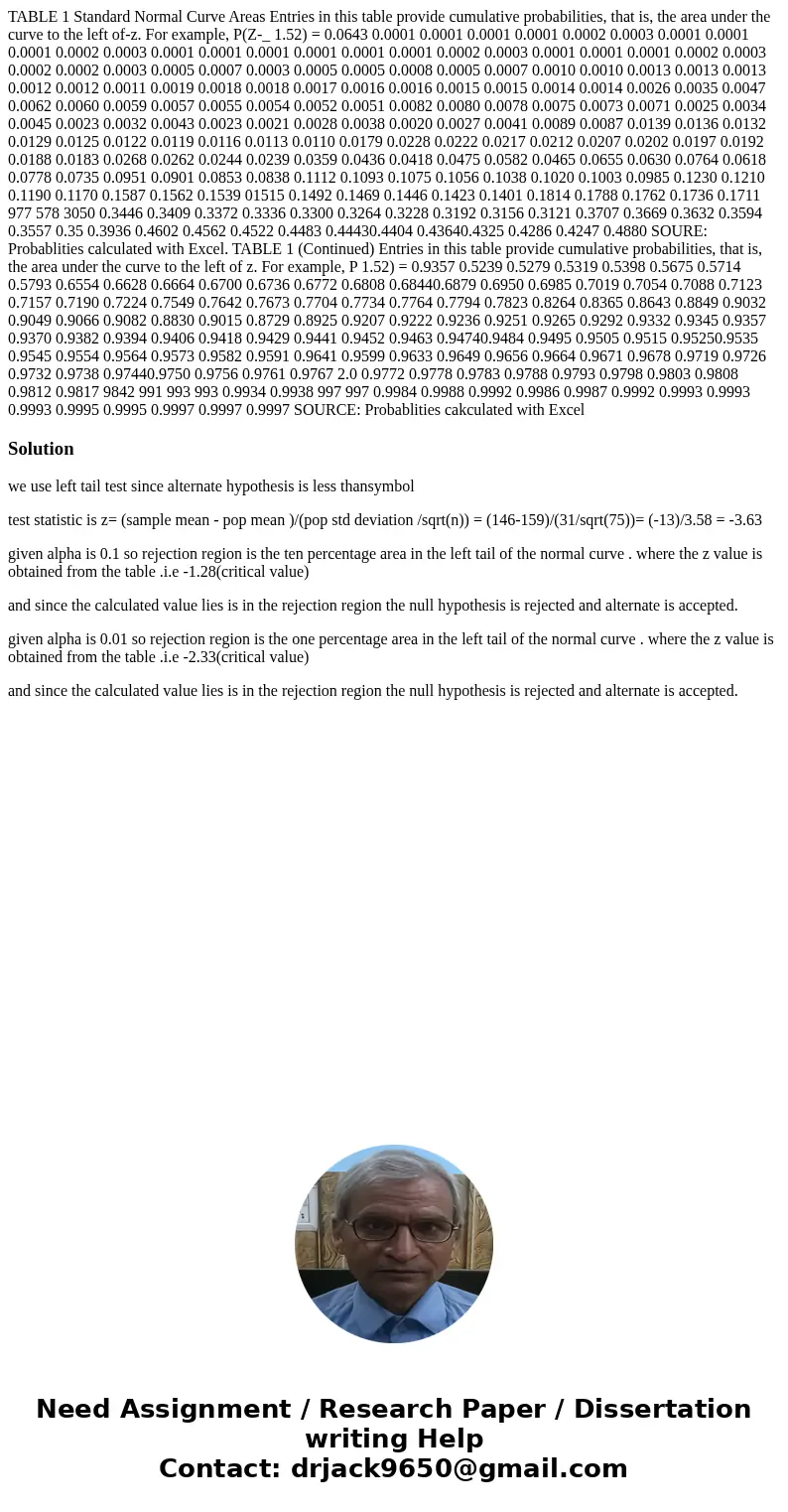TABLE 1 Standard Normal Curve Areas Entries in this table provide cumulative probabilities, that is, the area under the curve to the left of-z. For example, P(Z-_ 1.52) = 0.0643 0.0001 0.0001 0.0001 0.0001 0.0002 0.0003 0.0001 0.0001 0.0001 0.0002 0.0003 0.0001 0.0001 0.0001 0.0001 0.0001 0.0001 0.0002 0.0003 0.0001 0.0001 0.0001 0.0002 0.0003 0.0002 0.0002 0.0003 0.0005 0.0007 0.0003 0.0005 0.0005 0.0008 0.0005 0.0007 0.0010 0.0010 0.0013 0.0013 0.0013 0.0012 0.0012 0.0011 0.0019 0.0018 0.0018 0.0017 0.0016 0.0016 0.0015 0.0015 0.0014 0.0014 0.0026 0.0035 0.0047 0.0062 0.0060 0.0059 0.0057 0.0055 0.0054 0.0052 0.0051 0.0082 0.0080 0.0078 0.0075 0.0073 0.0071 0.0025 0.0034 0.0045 0.0023 0.0032 0.0043 0.0023 0.0021 0.0028 0.0038 0.0020 0.0027 0.0041 0.0089 0.0087 0.0139 0.0136 0.0132 0.0129 0.0125 0.0122 0.0119 0.0116 0.0113 0.0110 0.0179 0.0228 0.0222 0.0217 0.0212 0.0207 0.0202 0.0197 0.0192 0.0188 0.0183 0.0268 0.0262 0.0244 0.0239 0.0359 0.0436 0.0418 0.0475 0.0582 0.0465 0.0655 0.0630 0.0764 0.0618 0.0778 0.0735 0.0951 0.0901 0.0853 0.0838 0.1112 0.1093 0.1075 0.1056 0.1038 0.1020 0.1003 0.0985 0.1230 0.1210 0.1190 0.1170 0.1587 0.1562 0.1539 01515 0.1492 0.1469 0.1446 0.1423 0.1401 0.1814 0.1788 0.1762 0.1736 0.1711 977 578 3050 0.3446 0.3409 0.3372 0.3336 0.3300 0.3264 0.3228 0.3192 0.3156 0.3121 0.3707 0.3669 0.3632 0.3594 0.3557 0.35 0.3936 0.4602 0.4562 0.4522 0.4483 0.44430.4404 0.43640.4325 0.4286 0.4247 0.4880 SOURE: Probablities calculated with Excel. TABLE 1 (Continued) Entries in this table provide cumulative probabilities, that is, the area under the curve to the left of z. For example, P 1.52) = 0.9357 0.5239 0.5279 0.5319 0.5398 0.5675 0.5714 0.5793 0.6554 0.6628 0.6664 0.6700 0.6736 0.6772 0.6808 0.68440.6879 0.6950 0.6985 0.7019 0.7054 0.7088 0.7123 0.7157 0.7190 0.7224 0.7549 0.7642 0.7673 0.7704 0.7734 0.7764 0.7794 0.7823 0.8264 0.8365 0.8643 0.8849 0.9032 0.9049 0.9066 0.9082 0.8830 0.9015 0.8729 0.8925 0.9207 0.9222 0.9236 0.9251 0.9265 0.9292 0.9332 0.9345 0.9357 0.9370 0.9382 0.9394 0.9406 0.9418 0.9429 0.9441 0.9452 0.9463 0.94740.9484 0.9495 0.9505 0.9515 0.95250.9535 0.9545 0.9554 0.9564 0.9573 0.9582 0.9591 0.9641 0.9599 0.9633 0.9649 0.9656 0.9664 0.9671 0.9678 0.9719 0.9726 0.9732 0.9738 0.97440.9750 0.9756 0.9761 0.9767 2.0 0.9772 0.9778 0.9783 0.9788 0.9793 0.9798 0.9803 0.9808 0.9812 0.9817 9842 991 993 993 0.9934 0.9938 997 997 0.9984 0.9988 0.9992 0.9986 0.9987 0.9992 0.9993 0.9993 0.9993 0.9995 0.9995 0.9997 0.9997 0.9997 SOURCE: Probablities cakculated with Excel
we use left tail test since alternate hypothesis is less thansymbol
test statistic is z= (sample mean - pop mean )/(pop std deviation /sqrt(n)) = (146-159)/(31/sqrt(75))= (-13)/3.58 = -3.63
given alpha is 0.1 so rejection region is the ten percentage area in the left tail of the normal curve . where the z value is obtained from the table .i.e -1.28(critical value)
and since the calculated value lies is in the rejection region the null hypothesis is rejected and alternate is accepted.
given alpha is 0.01 so rejection region is the one percentage area in the left tail of the normal curve . where the z value is obtained from the table .i.e -2.33(critical value)
and since the calculated value lies is in the rejection region the null hypothesis is rejected and alternate is accepted.

 Homework Sourse
Homework Sourse